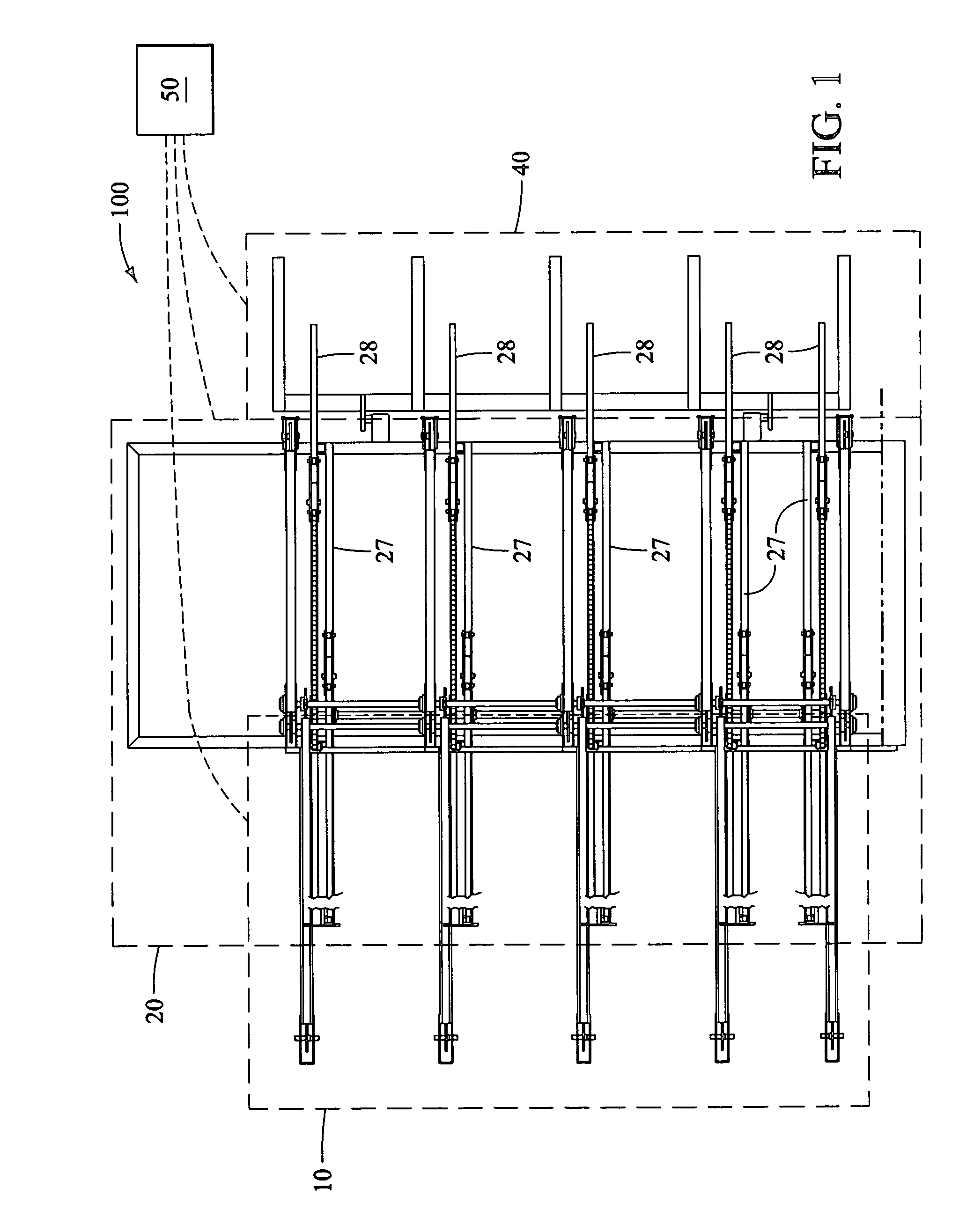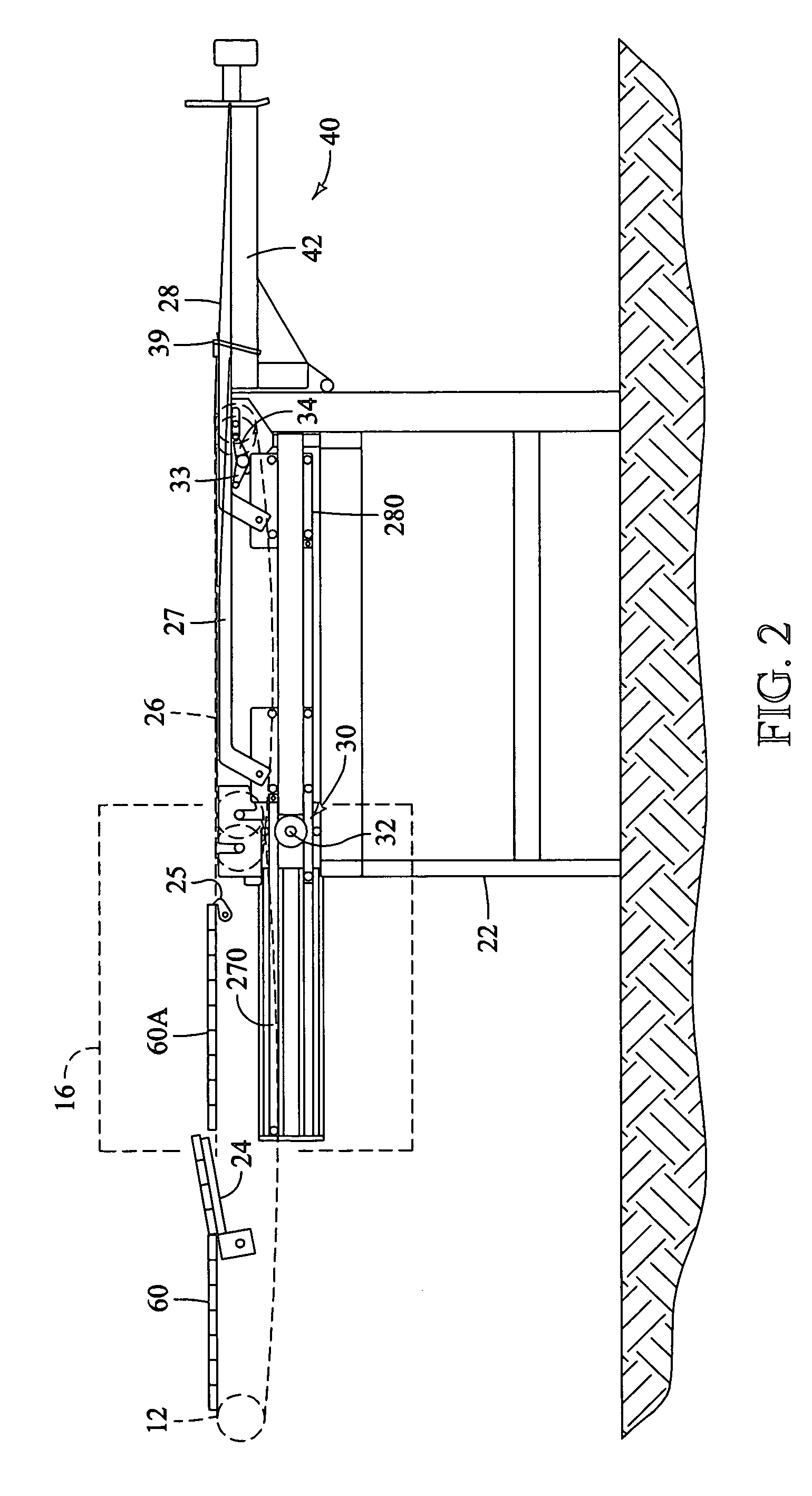High-speed stacker
a stacker and high-speed technology, applied in the direction of stacking articles, thin material handling, article delivery, etc., can solve the problems that the dual stacking arms cannot enable a fast, reliable, efficient stacker, etc., to achieve fewer timing and maintenance problems, speed up the rate at which lumber can be stacked, and improve the effect of efficiency
- Summary
- Abstract
- Description
- Claims
- Application Information
AI Technical Summary
Benefits of technology
Problems solved by technology
Method used
Image
Examples
Embodiment Construction
[0025]Various aspects and embodiments of the present invention will now be described in greater detail with reference to the accompany drawings. Beginning with FIGS. 1–3, a high-speed stacking system 100 according to a preferred embodiment includes a stacker infeed section 10, a dual carriage stacker 20, a package lift 40, and an electronic control system 50.
[0026]The stacker infeed section 10 preferably comprises a material conveyor 12, an even ender (not shown), and a course make-up section 16. The even ender aligns ends of the material pieces 60 with one another. The material conveyor 12 carries the material 60 (such as lumber, plywood, or other material) from a material supply to the course make-up section 16 (or pre-staging area). The material 60 can, for example, be formulated into courses 60A, using the course dividing arms 24 and course stop arms 25, in the course make-up section 16 of the stacker infeed section 10. Alternatively, however, the courses 60A can be formulated i...
PUM
 Login to View More
Login to View More Abstract
Description
Claims
Application Information
 Login to View More
Login to View More - R&D
- Intellectual Property
- Life Sciences
- Materials
- Tech Scout
- Unparalleled Data Quality
- Higher Quality Content
- 60% Fewer Hallucinations
Browse by: Latest US Patents, China's latest patents, Technical Efficacy Thesaurus, Application Domain, Technology Topic, Popular Technical Reports.
© 2025 PatSnap. All rights reserved.Legal|Privacy policy|Modern Slavery Act Transparency Statement|Sitemap|About US| Contact US: help@patsnap.com



